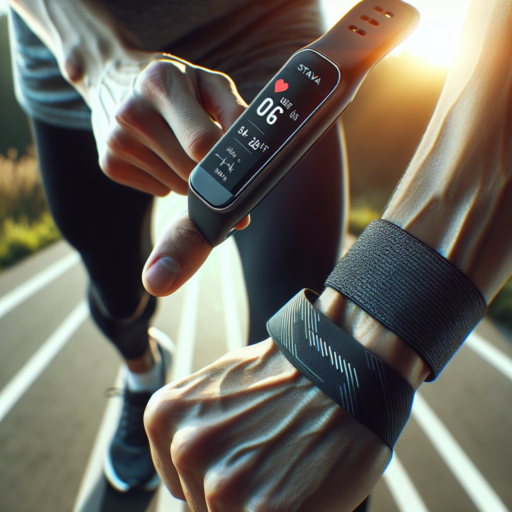What heart rate monitors work with Strava?
When it comes to optimizing your fitness journey, integrating a heart rate monitor with Strava can significantly enhance your tracking capabilities. Understanding which heart rate monitors are compatible is crucial for those looking to dive deeper into their performance analytics.
Firstly, Wahoo TICKR series stands out as a prime choice for athletes. These monitors are designed for comfort and precision, ensuring that every heartbeat is accurately counted and synced with Strava seamlessly. Their compatibility makes them a top pick for cyclists and runners who rely on Strava for detailed workout analytics.
Another reputable option is the Polar H10. Renowned for its accuracy and connectivity, the Polar H10 pairs effortlessly with Strava, providing real-time heart rate data that can help in fine-tuning your training regimens. Its versatility and high precision make it a favorite amongst endurance athletes who require meticulous tracking.
Lastly, the Garmin HRM-Dual is also compatible with Strava. This heart rate monitor is celebrated for its dual connectivity, which allows users to connect to multiple devices simultaneously. Whether you’re using Strava on your smartphone or a Garmin device, the HRM-Dual ensures your heart rate data is consistently and accurately captured.
What is the most accurate heart rate monitor for exercise?
Finding the most accurate heart rate monitor for exercise is crucial for those looking to optimize their fitness routine and track their heart health accurately. With a plethora of options available in the market, identifying the most reliable devices becomes paramount. These monitors vary in type, functionality, and accuracy, making it essential to understand the key features that contribute to their precision.
Types of Heart Rate Monitors
Primarily, there are two main types of heart rate monitors used during exercise: chest strap monitors and wrist-based monitors. Chest strap monitors are widely recognized for their accuracy. They are positioned close to the heart and measure the electrical pulses, providing real-time data. On the other hand, wrist-based monitors, which utilize optical sensors to detect blood flow, offer convenience and comfort but can sometimes lag in accuracy, especially during high-intensity workouts.
Key Features for Accuracy
When assessing the accuracy of heart rate monitors, several features stand out. First, a snug fit is imperative to reduce discrepancies in data. For chest straps, this means an adjustable band that ensures the monitor maintains close contact with the skin. For wrist monitors, it implicates a band that doesn’t pinch but is tight enough to prevent light from affecting the sensor’s readings. Additionally, the sampling rate of the device, or how often it reads your heart rate, plays a crucial role. Higher sampling rates generally offer more precise readings, capturing quick fluctuations during intense activities.
How do I get Strava to record my heart rate?
Integrating heart rate data into your Strava recordings can significantly enhance the monitoring of your fitness progress and provide valuable insights into your health and training efficiency. The process of getting Strava to record your heart rate involves a combination of compatible hardware and correct application settings.
Ensuring Compatibility with Heart Rate Monitors
Firstly, ensure your heart rate monitor is compatible with Strava. Most Bluetooth and ANT+ heart rate monitors should work seamlessly. After confirming compatibility, pairing your device with Strava is a crucial step. This typically involves going into the settings of your Strava app, finding the ‘Devices’ or ‘Sensors’ section, and selecting the option to add a new device. Follow the on-screen instructions to complete the pairing.
Starting Your Activity with Heart Rate Monitoring Enabled
With your heart rate monitor paired, the next step is to start an activity with heart rate monitoring enabled. Before you begin your workout, open Strava, select the type of activity you are about to undertake, and ensure your heart rate monitor is worn correctly and switched on. Strava should automatically detect your heart rate monitor and display your heart rate once the activity starts. Keeping your app updated and ensuring your heart rate monitor’s firmware is also up-to-date can prevent connectivity issues.
Remember, getting accurate heart rate data in Strava not only relies on the initial setup but also on regular maintenance of your heart rate monitor and ensuring stable connectivity during your activities. For those keen on detailed performance analytics, this integration is invaluable. Monitoring your heart rate during different types of activities can help tailor your training based on your body’s responses, pushing you closer to your fitness goals.
What heart rate monitors do pro cyclists use?
Professional cyclists utilize a range of heart rate monitors to optimize their training and performance. The choice of heart rate monitors amongst pro cyclists often gravitates towards models that offer precision, durability, and seamless integration with other cycling equipment. Brands such as Garmin, Wahoo, and Polar are frequently mentioned in discussions about the top choices for serious cyclists. These monitors come equipped with features that are particularly beneficial for the rigorous demands of cycling at a professional level.
The Garmin HRM-Pro, for instance, is highly praised for its advanced metrics, including real-time heart rate data, running dynamics, and extensive battery life, which is essential for long training sessions and races. Similarly, the Wahoo TICKR X offers impressive compatibility with both smartphones and bike computers, making it a versatile choice for cyclists who use multiple devices while training or competing. The Polar H10, known for its accuracy and connectivity, is another top choice, providing pro cyclists with detailed insights into their heart rate variability (HRV) and other critical performance metrics.
Moreover, the integration of these heart rate monitors with various training platforms and cycling computers, like Zwift and Strava, enables cyclists to analyze their performance data in real-time and adjust their training plans accordingly. Such integrations are invaluable, as they allow athletes to meticulously plan their training sessions with precision, ensuring that every ride is optimized for maximum performance improvement. This synergetic relationship between technology and training exemplifies why selecting the right heart rate monitor is crucial for any professional cyclist’s success.










